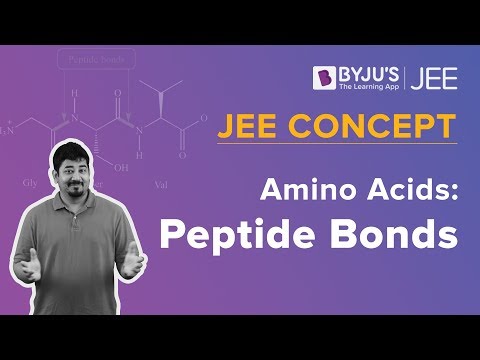What is Protein?
Proteins are very large molecules composed of basic units called amino acids. Proteins contain carbon, hydrogen, oxygen, nitrogen, and sulphur.
Protein molecules are large, complex molecules formed by one or more twisted and folded strands of amino acids. Proteins are highly complex molecules that are actively involved in the most basic and important aspects of life. These include metabolism, movement, defense, cellular communication, and molecular recognition.

Table of Contents
Recommended Videos on Protein

Functions of Proteins
Positive negative attractions between different atoms in the long amino acid strand cause it to coil on itself again and again to form its highly complex shape. Folded proteins may combine with other folded proteins to form even larger more complicated shapes.
The folded shape of a protein molecule determines its role in body chemistry. Structural proteins are shaped in ways that allow them to form essential structures of the body. Collagen, a protein with a fibre shape, holds most of the body tissues together. Keratin, another structural protein forms a network of waterproof fibres in the outer layer of the skin.
Functional proteins have shapes that enable them to participate in chemical processes of the body. Functional proteins include some of hormones, growth factors, cell membrane receptors, and enzymes.
Classification of Proteins
Protein molecules are large, complex molecules formed by one or more twisted and folded strands of amino acids. Each amino acid is connected to the next amino acid by covalent bonds.
-
-
-
- Primary (first level) – Protein structure is a sequence of amino acids in a chain.
- Secondary (secondary level) – Protein structure is formed by folding and twisting of the amino acid chain.
- Tertiary (third level) – Protein structure is formed when the twists and folds of the secondary structure fold again to form a larger three dimensional structure.
- Quaternary (fourth level) – Protein structure is a protein consisting of more than one folded amino acid chain.
-
-
Proteins can bond with other organic compounds and form “mixed” molecules. For example, glycoproteins embedded in cell membranes are proteins with sugars attached. Lipoproteins are lipid-protein combinations.
Nucleic Acids
The two forms of nucleic acid are deoxyribonucleic acid and ribonucleic acid. The basic building blocks of nucleic acids are called nucleotides. Each nucleotide consists of a phosphate unit, a sugar and a nitrogen base. DNA nucleotide bases include adenine, thymine, guanine and cytosine. RNA uses the same set of bases, except for the substitution of unit cells for thymine.
Nucleotides bind to one another to form strands or other structures. In the DNA molecule, nucleotides are arranged and twisted, and a double strand called a double helix. The sequence of different nucleotides along the DNA double helix is the “master code” for assembling proteins and other nucleic acids.
Frequently Asked Questions on Protein Definition
What is the basic definition of protein?
Protein is a material that includes amino acids, carbohydrates, carbon, hydrogen, oxygen, nitrogen, and sometimes sulphur. It is included in many diets. The type of nutrient found in meats is one example of a protein.
What are proteins and their function?
Proteins are large, complex molecules playing several critical roles in the body. They do most of the work in cells and are required for the tissues and organs of the body’s structure, function and regulation. Those proteins provide cells with structure and support. They also cause the body to move on a larger scale.
What is the example of protein?
Proteins are organic molecules that are present in living organisms. They serve a wide range of functions including organization, transportation, and defense. Proteins are composed of amino acid chains, and structure levels are up to four. Certain specific protein examples include collagen, insulin, and anticorps.
What characterizes a protein?
Proteins are macromolecular polypeptides, that is, very large molecules (macromolecules) made up of several amino acids bound to the peptides. Most common ones contain more than 100 amino acids that are linked together in a long chain of peptides.

Comments